Table of Contents
- Introduction: What's in BBQ Seasoning?
- Common Ingredients in BBQ Seasoning
- Understanding the Flavor Profiles
- Types of BBQ Seasonings and Their Uses
- How to Use BBQ Seasoning Like a Pro
- The Ultimate Buying Guide for BBQ Seasoning
- Frequently Asked Questions About BBQ Seasoning
- Conclusion: Taste the Difference with the Right Seasoning
Introduction: What's in BBQ Seasoning?
BBQ seasoning typically contains a blend of key ingredients including smoked paprika, garlic powder, onion powder, salt, black pepper, cayenne pepper, and brown sugar. These components create the signature smoky, savory, and slightly sweet flavors that enhance grilled meats. Whether you're an amateur griller or a seasoned pro, understanding what's in BBQ seasoning can elevate your cooking game. In this guide, we'll break down the ingredients, flavor profiles, and how to use them like a master chef. Plus, we'll give you a buying guide to help you choose the perfect seasoning for your next backyard barbecue.
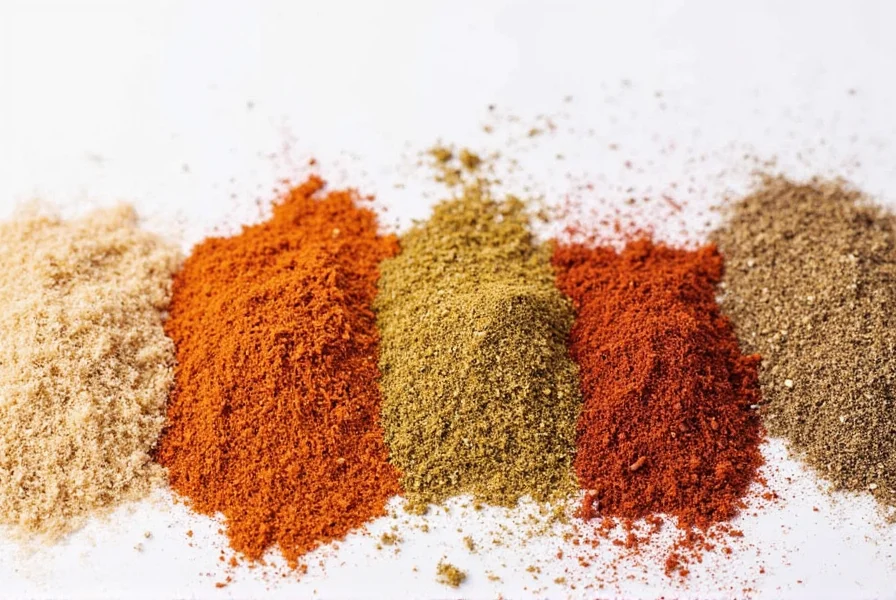
Common Ingredients in BBQ Seasoning
Most BBQ seasonings are blends of basic spices and herbs that work together to create a bold, smoky flavor. While each brand may have its own unique recipe, there are some core ingredients that are almost always included. Here's a quick breakdown of the most common components:
- Smoked Paprika: Adds that classic smoky depth to the seasoning.
- Cayenne Pepper: Provides a nice kick of heat without being overwhelming.
- Garlic Powder: Enhances the umami and adds a savory note.
- Onion Powder: Offers a mild sweetness and depth of flavor.
- Salt: Balances the other flavors and brings everything together.
- Parsley or Oregano: Adds a fresh, herbal note to the mix.
- Black Pepper: Gives a bit of sharpness and complexity.
Some BBQ seasonings also include brown sugar or molasses for a touch of sweetness, while others might add chili powder, cumin, or even coffee for a deeper, more complex flavor. The combination of these ingredients is what gives each seasoning its unique identity.
| Ingredient | Flavor Profile | Role in Seasoning |
|---|---|---|
| Smoked Paprika | Smoky, slightly sweet | Base for smoky flavor |
| Cayenne Pepper | Spicy, fiery | Heat element |
| Garlic Powder | Savory, pungent | Umami enhancer |
| Onion Powder | Mildly sweet, earthy | Depth and balance |
| Salt | Salty, enhancing | Flavor balancing |
| Parsley or Oregano | Fresh, herbaceous | Herbal brightness |
| Black Pepper | Pungent, sharp | Complexity and aroma |

Understanding the Flavor Profiles
The beauty of BBQ seasoning lies in its ability to balance different flavor elements. Each spice contributes something unique, and when combined, they create a harmonious taste that complements grilled meats, vegetables, and even sauces.
Here's a quick look at the main flavor profiles found in BBQ seasoning:
- Smoky: Provided by smoked paprika or chipotle powder.
- Spicy: From cayenne pepper, chili powder, or jalapeño flakes.
- Savory: Garlic and onion powders bring a deep, umami-rich flavor.
- Sweet: Brown sugar or honey in some blends adds a caramelized edge.
- Herbal: Fresh herbs like parsley or oregano provide a bright, green note.
By mixing these elements, you can create a seasoning that's both bold and balanced. Some people prefer a sweeter, more traditional BBQ rub, while others go for a spicy, fire-roasted blend. It all depends on your taste preferences and the type of dish you're preparing.
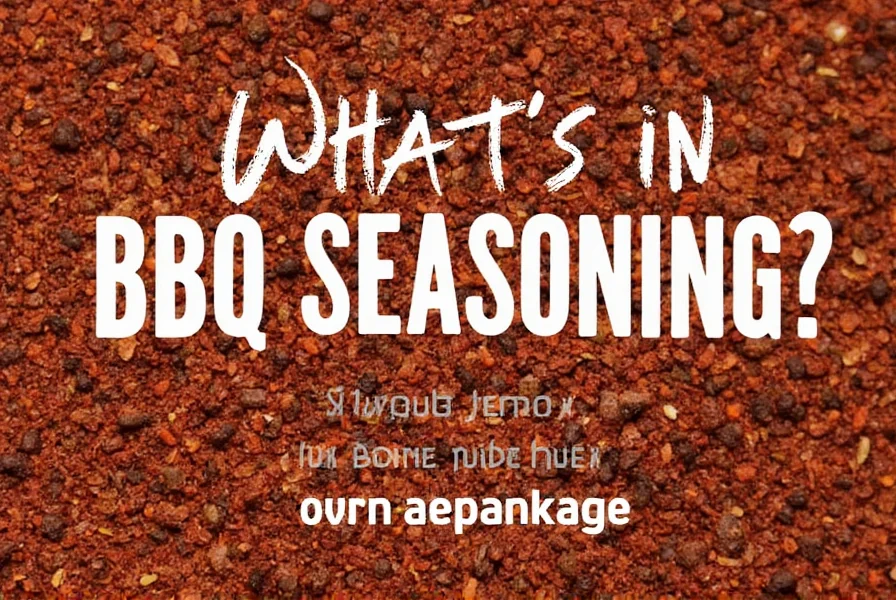
Types of BBQ Seasonings and Their Uses
There are several types of BBQ seasonings, each with its own unique character and ideal use cases. Here are the most common varieties:
- Classic BBQ Rub: A balanced mix of smoked paprika, garlic, onion, salt, and pepper. Great for ribs, chicken, and brisket.
- Spicy BBQ Seasoning: Includes more cayenne, chili powder, or hot sauce. Perfect for those who love a little heat.
- Sweet BBQ Seasoning: Features more brown sugar or honey. Ideal for grilled vegetables, corn on the cob, or sweet potato fries.
- Smokehouse Seasoning: Often includes coffee or espresso powder for a deep, smoky finish. Best for slow-cooked meats like pulled pork.
- Regional Variations: Different regions have their own styles—like Kansas City's sweet and tangy, Texas's bold and spicy, or Carolina's vinegar-based sauces.
Choosing the right type of seasoning depends on your personal taste and the dish you're making. Don't be afraid to experiment and find your favorite combination!

How to Use BBQ Seasoning Like a Pro
Knowing what's in BBQ seasoning is only half the battle. The real key is knowing how to use it effectively. Here are some tips to help you get the most out of your seasoning:
- Apply Generously: Don't be shy—season your meat well before grilling. A generous coating ensures the flavors penetrate the meat.
- Let It Sit: Allow the seasoning to sit on the meat for at least 30 minutes (or up to overnight) to let the flavors absorb.
- Use a Dry Rub: For the best results, apply the seasoning as a dry rub before grilling or smoking.
- Combine with Sauces: Pair your seasoned meat with a complementary BBQ sauce for extra flavor.
- Experiment with Blends: Mix different seasonings to create your own custom blend.
Remember, the goal is to enhance the natural flavor of the meat, not overpower it. With the right technique, your BBQ seasoning can turn any meal into a culinary masterpiece.
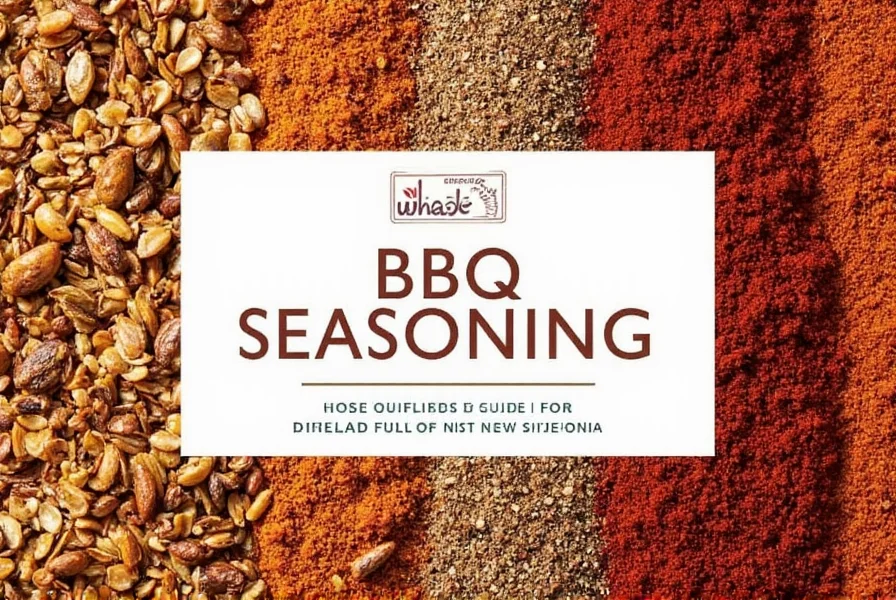
The Ultimate Buying Guide for BBQ Seasoning
If you're looking to upgrade your grilling game, choosing the right BBQ seasoning is essential. Here's a detailed buying guide to help you make an informed decision:
Top Brands and Products
Several brands offer high-quality BBQ seasonings that cater to different tastes and budgets. Here are a few popular options:
- Kansas City BBQ Sauce Seasoning
- Features: Sweet, smoky, and tangy with a balanced blend of spices.
- Advantages: Great for ribs, brisket, and pulled pork.
- Use Cases: Ideal for backyard barbecues and family gatherings.
- Target Audience: Home cooks and BBQ enthusiasts.
- Hot & Spicy BBQ Seasoning
- Features: Packed with cayenne, chili powder, and garlic.
- Advantages: Adds a bold, fiery kick to any dish.
- Use Cases: Perfect for spicy chicken wings or grilled sausages.
- Target Audience: Spicy food lovers and adventurous eaters.
- Smokehouse BBQ Rub
- Features: Includes coffee, smoked paprika, and black pepper.
- Advantages: Deep, smoky flavor that works well with slow-cooked meats.
- Use Cases: Excellent for pulled pork, brisket, and beef ribs.
- Target Audience: Serious BBQ fans and pitmasters.
When shopping for BBQ seasoning, look for products that are free from artificial additives and preservatives. Opt for natural, high-quality blends that deliver real flavor. Also, consider the occasion—do you want something for a casual dinner or a special event?
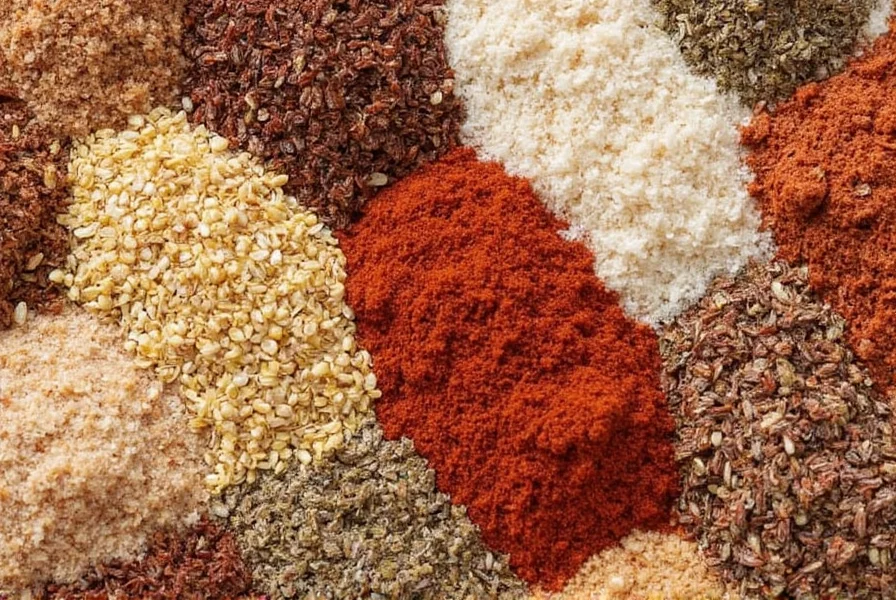
Frequently Asked Questions About BBQ Seasoning
What are the essential ingredients in BBQ seasoning?
The essential ingredients in most BBQ seasonings include smoked paprika (for smoky flavor), garlic powder, onion powder, salt, black pepper, and often cayenne pepper for heat. Many blends also include brown sugar for sweetness and herbs like oregano or parsley for freshness.
Does all BBQ seasoning contain sugar?
No, not all BBQ seasonings contain sugar. While many traditional American-style BBQ rubs include brown sugar for caramelization and sweetness, regional variations differ. Texas-style BBQ rubs often focus on salt, pepper, and paprika without sugar, while Carolina-style seasonings might use vinegar instead of sweeteners.
Is there actual smoke in BBQ seasoning?
No, there's no actual smoke in BBQ seasoning. The smoky flavor primarily comes from smoked paprika, which is made from peppers that have been smoked and dried before being ground into powder. Some premium blends might also use natural smoke flavor extracts.
How long does homemade BBQ seasoning last?
Properly stored in an airtight container away from light and moisture, homemade BBQ seasoning can last 6-12 months. Commercial blends often have a longer shelf life (1-2 years) due to preservatives, but check the expiration date on the package.
Can I make my own BBQ seasoning at home?
Absolutely! Making your own BBQ seasoning is simple and allows you to customize flavors to your preference. A basic recipe includes 1/4 cup smoked paprika, 2 tbsp garlic powder, 2 tbsp onion powder, 2 tbsp salt, 1 tbsp black pepper, 1 tbsp brown sugar, and 1 tsp cayenne pepper (adjust to taste).
What's the difference between BBQ seasoning and BBQ rub?
BBQ seasoning typically refers to a finer powder blend used to flavor food, while BBQ rub usually contains coarser ingredients designed to form a crust on meat during cooking. However, the terms are often used interchangeably in casual conversation.
Are commercial BBQ seasonings healthy?
Many commercial BBQ seasonings contain high amounts of sodium and sometimes added sugars or preservatives. For a healthier option, look for blends with simple ingredients, or make your own using pure spices without additives. Reading labels carefully is important if you're watching sodium intake.
Can I use BBQ seasoning on dishes other than meat?
Definitely! BBQ seasoning works wonderfully on roasted vegetables, popcorn, potato wedges, and even in soups and stews for added depth of flavor. It's versatile beyond just meat applications.
Conclusion: Taste the Difference with the Right Seasoning
BBQ seasoning is a carefully crafted blend of spices that enhances the natural flavors of your food and brings out the best in your grilled dishes. Whether you're using a classic rub, a spicy mix, or a sweet blend, the right seasoning can transform your cooking experience.
Understanding the ingredients, flavor profiles, and proper usage of BBQ seasoning empowers you to create mouthwatering meals that impress your guests and satisfy your taste buds. And with the right product, you can take your grilling skills to the next level.
Next time you fire up the grill, remember that the secret to great BBQ lies not just in the meat, but in the seasoning. So grab your favorite blend, and let the flavor adventure begin!


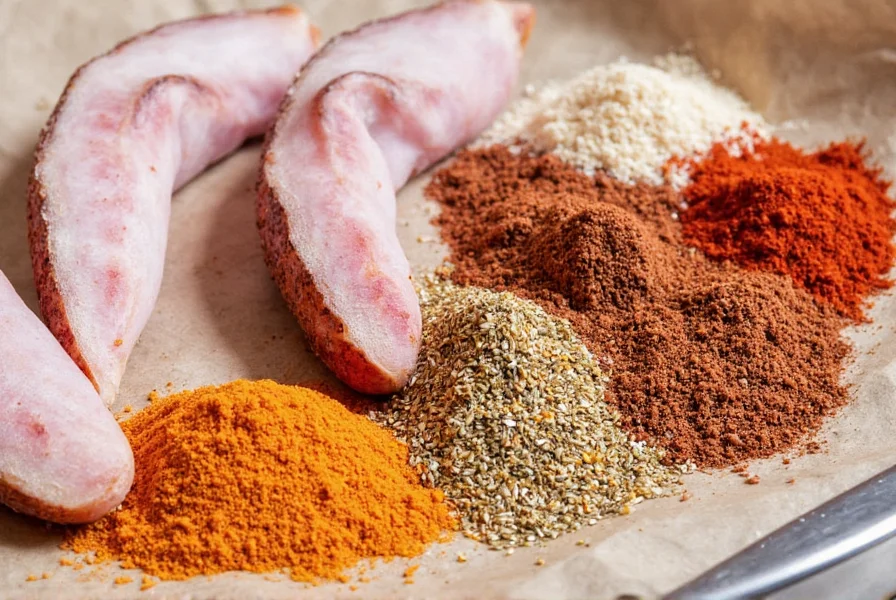









 浙公网安备
33010002000092号
浙公网安备
33010002000092号 浙B2-20120091-4
浙B2-20120091-4